|
|
|
|
|
What is Social Philately
|
|
Social Philately is a fairly new concept in collecting, although it can
probably be said that it has existed within the hobby for many years, but not
recognised within the various classes of collecting. Generally speaking
Ephemera, or Collateral Material, within a collection of postal history;
aerophilately; and thematics, may be considered as components of the social
aspects. These collateral materials — postcards; official documents;
shipping and airline routes; commercial services etc., not only add interest
to the collection but frequently enhance the story, often forming the basic f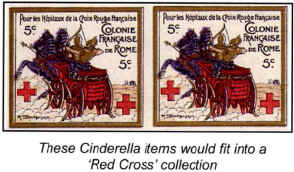 ramework on which the philatelic items are constructed. ramework on which the philatelic items are constructed.
The idea is to link the social/economic history to
the historical content of philately. The aim of Social Philately is to present
a historical story, or to illustrate the relevance or impact of the postal
system within society.
You can tell the story of the development of a town or country by using the
stamps, covers and documents; likewise the historical background to an
important event (eg. The Olympic Games, the American Revolution, the English
Civil War, the Siege of Paris, etc.) can be brought to life in a collection of
Social Philately. Social conventions, such as sending Valentines, or the
development of a business or industry (such as the timber, textile, mining or
brewing industries) can also be subjects for a Social Philately
collection.
|
|
Getting
Started
|
|
Step 1. Choose
your subject - if you already collect stamps or postal history you may have
items which are ‘sideline’ to your main collection, and which could be
incorporated into it. Alternatively, you might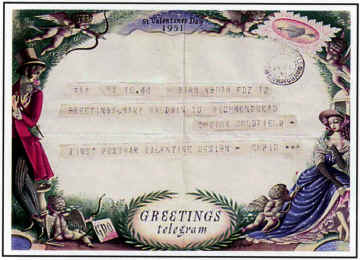 have a special interest which
would lend itself as a theme - ask other collectors or dealers at fairs to
gauge how much material might be available in you chosen area. Try not to pick
a topic which has a scarcity of material available, or you may become easily
frustrated ! have a special interest which
would lend itself as a theme - ask other collectors or dealers at fairs to
gauge how much material might be available in you chosen area. Try not to pick
a topic which has a scarcity of material available, or you may become easily
frustrated !
Step 2. Look for philatelic items and
non-philatelic items which relate directly to your topic. Remember -
the wider the variety of items, the more enjoyable your collection will be to
you, and others! The items listed under “What to Collect” are just some of
those possible - Stamp and Postcard magazines, for example, can give you lots
of ideas on the range of philatelic material available.
Step 3. Arrange the material in a sequence which makes your
story flow - this may be chronologically, or by grouping items together. This
is your ‘Plan’ and is most important if you intend to display your
collection. Step 4. Mount your items on ‘album’ pages, using stamp
hinges or corner mounts for envelopes, postcards, etc.
|
|
|
What
to collect?
|
|
|
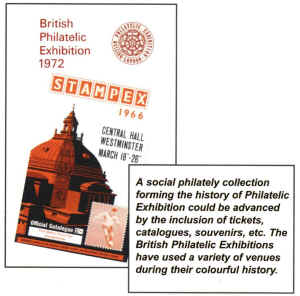 Social Philately represents a study of the
development of social systems and products derived from the operation of
postal systems. It includes material which can be included in other classes of
philately as well as non philatelic items which are directly related to the
operations and products of a postal system, either as post office equipment or
as material developed by commerce to use or reflect post office services and
products.
Social Philately represents a study of the
development of social systems and products derived from the operation of
postal systems. It includes material which can be included in other classes of
philately as well as non philatelic items which are directly related to the
operations and products of a postal system, either as post office equipment or
as material developed by commerce to use or reflect post office services and
products.
A social philately collection forming the history of
Philatelic Exhibition could be advanced by the inclusion of tickets,
catalogues, souvenirs, etc. The British Philatelic Exhibitions have used a
variety of venues during their colourful history.
Examples
of Social Philately
Airgraphs;
Airline & Shipping Routes; Aspects of the effect of the postal
system on commerce or industry; Greeting Cards including Valentines;
Illustrated Advertising and Pictorial Envelopes (including Patriotic Covers;
Letterheads; Trade cards; etc.)
Locality
studies based on postal and social history using the materials of Social
Philately; Objects associated with postage stamps and their use (letter
balances, stamp boxes, model post office implements etc);
Officially issued documents bearing illustrations of
postage stamps;
Philatelic History other than literature (including albums,
hinges, perforation gauges etc, the impedimenta of philately); PHQ Cards
-objects associated with postage stamps and their use; Post Office and
Official office stationery (without imprinted stamp); Telegram Services. (this
list is not exhaustive!)
|
|
Developing
the collection
|
As you can see from the previous examples, ‘almost
anything’ can be included into a Social Philately collection. Of course
there are practical considerations of how to display your material, especially
if you are entering your collection as a competitive exhibit. But solely from
the point of view of collecting, the range and scope of the material is only
limited by YOUR IMAGINATION! Remember -You do not need to be an experienced
philatelist to be a collector of Social Philately, the emphasis is on history
and society - not the postal rates or the different stamp printings!
Try to organise your collection so that it tells a
story, with a beginning a middle and an end, rather than jus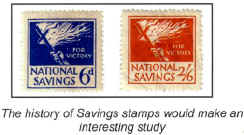 t an accumulation
of material of all the same subject. Find out as much as you can about your
chosen theme. You’d be surprised how much easier it is to find relevant
material that belongs in you collection, once you really study your subject.
If it is work or hobby related you probably know quite a lot about your chosen
subject already. If it is a completely new concept then there will be the
further challenge of not only finding suitable philatelic and ephemera type
material for your fledgling collection, but finding information about the
subject as well. Research the local Library, or if you have access to a
computer the Internet is a useful research tool. Build up as much data about
your topic as possible, that way it will become easier to find the relevant
philatelic and non-philatelic material to fit your theme. t an accumulation
of material of all the same subject. Find out as much as you can about your
chosen theme. You’d be surprised how much easier it is to find relevant
material that belongs in you collection, once you really study your subject.
If it is work or hobby related you probably know quite a lot about your chosen
subject already. If it is a completely new concept then there will be the
further challenge of not only finding suitable philatelic and ephemera type
material for your fledgling collection, but finding information about the
subject as well. Research the local Library, or if you have access to a
computer the Internet is a useful research tool. Build up as much data about
your topic as possible, that way it will become easier to find the relevant
philatelic and non-philatelic material to fit your theme.
Remember, the function of the non-philatelic material
is to amplify, and not merely to add an element of decoration to the
collection.
|
| Exhibiting
Social Philately |
|
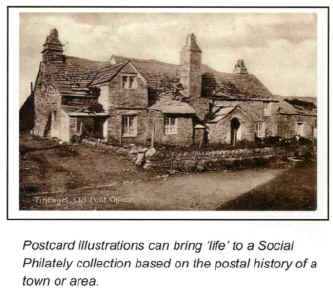 Once
the basic collection has been formed, some collectors are keen to display or
exhibit their work. Local: A good place to start is the local club or Society,
most have an annual competition and many are including Social Philately to
encourage more participation. National: Social Philately as a UK National
level Class made its debut at Glasgow 2000. It was introduced to enable
exhibitors who wish to enter exhibits based on a theme related to social
history, Up to 50% of non-philatelic material was allowed to be included.
Today, this Class has been dropped in favour of the ‘OPEN CLASS’ which has
much the same rules and concept. International: Many international exhibitions
are now including an experimental or ‘Open Class’ in their shows.
Once
the basic collection has been formed, some collectors are keen to display or
exhibit their work. Local: A good place to start is the local club or Society,
most have an annual competition and many are including Social Philately to
encourage more participation. National: Social Philately as a UK National
level Class made its debut at Glasgow 2000. It was introduced to enable
exhibitors who wish to enter exhibits based on a theme related to social
history, Up to 50% of non-philatelic material was allowed to be included.
Today, this Class has been dropped in favour of the ‘OPEN CLASS’ which has
much the same rules and concept. International: Many international exhibitions
are now including an experimental or ‘Open Class’ in their shows.
Anyone wishing more
information on collecting, displaying, or exhibiting Social Philately should
contact the Association of
British Philatelic Societies. c/o RPSL, 41, Devonshire Place, London W1G
6JY.
|


 t an accumulation
of material of all the same subject. Find out as much as you can about your
chosen theme. You’d be surprised how much easier it is to find relevant
material that belongs in you collection, once you really study your subject.
If it is work or hobby related you probably know quite a lot about your chosen
subject already. If it is a completely new concept then there will be the
further challenge of not only finding suitable philatelic and ephemera type
material for your fledgling collection, but finding information about the
subject as well. Research the local Library, or if you have access to a
computer the Internet is a useful research tool. Build up as much data about
your topic as possible, that way it will become easier to find the relevant
philatelic and non-philatelic material to fit your theme.
t an accumulation
of material of all the same subject. Find out as much as you can about your
chosen theme. You’d be surprised how much easier it is to find relevant
material that belongs in you collection, once you really study your subject.
If it is work or hobby related you probably know quite a lot about your chosen
subject already. If it is a completely new concept then there will be the
further challenge of not only finding suitable philatelic and ephemera type
material for your fledgling collection, but finding information about the
subject as well. Research the local Library, or if you have access to a
computer the Internet is a useful research tool. Build up as much data about
your topic as possible, that way it will become easier to find the relevant
philatelic and non-philatelic material to fit your theme.